

Australopithecus afarensis: a “committed terrestrial biped” « Why Evolution Is True. So much information from a single bone!

Paleontologists are expert in deducing a lot of stuff from a fragment of fossil. Sometimes you have to wonder if they’re doing it rong, but when one of the team is Donald Johanson (the discoverer of the famous Australopithecus afarensis specimen named”Lucy“), then you’re pretty confident. Going digital - digital terrestrial radio for Australia. Research Paper Index Research Paper no. 18 2008–09 Going digital—digital terrestrial radio for Australia Dr Rhonda Jolly Social Policy Section 19 December 2008 Contents Introduction.
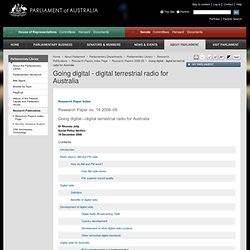
Wolf Haven International. Mmm, fresh salmon!

Lakes and other Aquatic Habitats. Aquatic Habitats - Lakes et al.
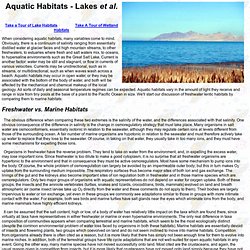
Salamanders and Newts. Natural History Salamanders, newts and caecilians (a legless, salamander-type animal) all belong in the order Amphibia along with frogs and toads, ancestors of the first aquatic vertebrates to begin to colonize that other earthly environment - land.

Comprising a mere 350 species out of the 4000 or so known species of amphibians, salamanders and newts are found only in the Americas and in the temperate zones of Northern Africa, Asia and Europe. There is little distinction between the amphibians known as "newt" and "salamander. " What is called a salamander in the Americas may well be called a newt in Europe.
Some apply the name "salamander" to the fully aquatic and fully terrestrial animals, while applying the name "newt" to those animals that live on land from late summer through winter, entering water to breed in the spring. Introducing biodiversity. An introduction to Ireland’s biodiversity by Dr Don Cotton In the global effort to protect the planet’s biodiversity it might seem that Ireland is an insignificant piece of land and marine continental shelf.
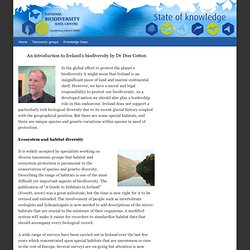
West Africa - A Safe Haven for Frogs? A Sub-Continental Assessment of the Chytrid Fungus (Batrachochytrium dendrobatidis) A putative driver of global amphibian decline is the panzootic chytrid fungus Batrachochytrium dendrobatidis (Bd).

While Bd has been documented across continental Africa, its distribution in West Africa remains ambiguous. We tested 793 West African amphibians (one caecilian and 61 anuran species) for the presence of Bd. The samples originated from seven West African countries - Bénin, Burkina Faso, Côte d'Ivoire, Ghana, Guinea, Liberia, Sierra Leone - and were collected from a variety of habitats, ranging from lowland rainforests to montane forests, montane grasslands to humid and dry lowland savannahs. The species investigated comprised various life-history strategies, but we focused particularly on aquatic and riparian species. We used diagnostic PCR to screen 656 specimen swabs and histology to analyse 137 specimen toe tips.
Figures. TERN - Terrestrial Ecosystem Research Network: Age-old knowledge + contemporary science = healthy continent. Connections between age-old Aboriginal ecological knowledge and contemporary science and technology may improve the way all Australians husband ecosystems through rapidly changing land uses.
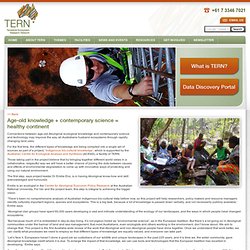
A warmer planetary haven around cool stars, as ice warms rather than cools. July 19, 2013 — In a bit of cosmic irony, planets orbiting cooler stars may be more likely to remain ice-free than planets around hotter stars.

This is due to the interaction of a star's light with ice and snow on the planet's surface. Stars emit different types of light. Hotter stars emit high-energy visible and ultraviolet light, and cooler stars give off infrared and near-infrared light, which has a much lower energy. It seems logical that the warmth of terrestrial or rocky planets should depend on the amount of light they get from their stars, all other things being equal.
But new climate model research led by Aomawa Shields, a doctoral student in the University of Washington astronomy department, has added a surprising new twist to the story: Planets orbiting cool stars actually may be much warmer and less icy than their counterparts orbiting much hotter stars, even though they receive the same amount of light. Terrestriality—Vol. 2, No. 2. A pocket globe made by Charles Price in 1716.
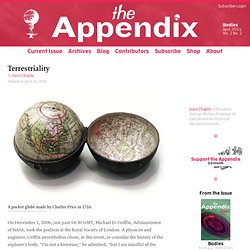
The Science Museum, London On December 1, 2006, just past 18:30 GMT, Michael D. Griffin, Administrator of NASA, took the podium at the Royal Society of London. How reliable are climate models? Climate models are mathematical representations of the interactions between the atmosphere, oceans, land surface, ice – and the sun. This is clearly a very complex task, so models are built to estimate trends rather than events.
For example, a climate model can tell you it will be cold in winter, but it can’t tell you what the temperature will be on a specific day – that’s weather forecasting. Climate trends are weather, averaged out over time - usually 30 years. The Project Gutenberg eBook of Terrestrial and Celestial Globes Vol. I. by Edward Luther Stevenson. Terrestrial Environment. The terrestrial environment of the Wild Coast is commonly divided into two broad areas. South of Port St Johns lies a gently undulating coastline, interspersed with rocky points, and is more densely populated with highly popular holiday destinations and homes right to the shoreline.
Vegetation types most predominant in this area include the Transkei Coastal belt grasslands and scarp forests. Exploring the Marine and Terrestrial Wonders of Baja.